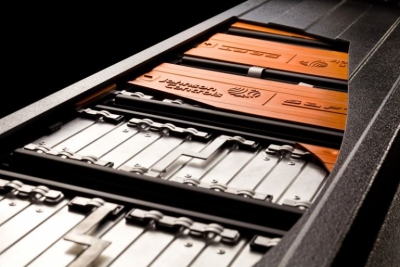
If you are planning to convert a gasoline driven car to run on electricity from your home garage, you have to know the entire key components in the EV. Each and every part in the system is important to make sure the electric vehicle is safe and functional.
The following is a list of 21 items of a homemade electric car.
1) Electric Motor (AC or DC) – The electric motor is the heart of the EV. Since the internal combustion engine (ICE) is removed, the electric motor will be the power plant to generate torque to propel the car forward.
2) Motor Controller – The motor controller is used to control the amount of electric current going into the electric motor. It is very similar to controlling the amount of fuel going into an engine therefore controlling the power output.
3) Manual Disconnect – A manual disconnect is basically a switch you use to cut off all the power in the system to reduce the chance of electrocution. You want to cut off the power when you are doing maintenance work on your EV.
4) Motor Adapter – A special metal plate custom made to fit the housing of the transmission unit. The motor adapter will be used to connect the electric motor to the vehicle transmission.
5) Main Contactor – This is the one main switch that can be used to totally disconnect all power flowing in the system.
6) Inertia Switch – The inertia switch will be automatically activated when there is an accident to disconnect the battery from the system.
7) Electric Charger – Used to charge the battery units of the electric car.
8) Battery Ends – The positive and negative ends of the battery where the cable terminal will be connected.
9) DC – DC Power Supply – A power supply that uses Direct Current to produce a variance of Direct Current.
10) Amp Meter Shunt – A measuring instrument used to measure the electric current flow in the EV circuit.
11) E – Meter – Used to measure the voltage output from the battery bank.
12) Fuses – Safety component for the electric circuit.
13) Throttle Box Control – Connected to the controller to regulate the power of the electric motor.
14) Battery Cable – Cables used to connect all the batteries together in series.
15) Cable Cutter – Heavy duty cutter used to cut and trim cables.
16) Lugs – Connected to the ends of the cables.
17) Cable Crimping Tool – A special tool used to crimp the ends of the cables to the lugs.
18) Vacuum Pump – Used to bleed the power brakes of the electric car.
19) Batteries – DC electric storage units used to power the electric motor. The type of battery suitable for EV conversion is the deep cycle type.
20) Battery Boxes – Storage and holding unit for the batteries. Acts as a temperature control and safety shield for the batteries.
21) Miscellaneous nuts and bolts – Used to hold all the parts together securely.
If you want to know how to build an electric car at home, be sure to check out Gavin Shoebridge’s Electric Conversion Made Easy e-book.
Gavin is from New Zealand and he has converted his 1987 Mitsubishi Tredia into an EV. His manual document his electric car conversion project.
